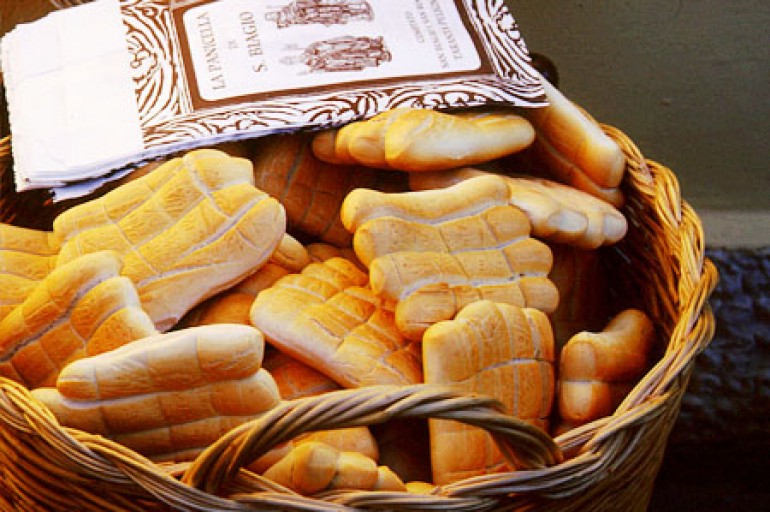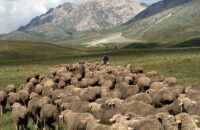In many Abruzzo towns, February 3 is a characteristic date linked to a religious tradition but also, as is often the case with other holidays, to a culinary tradition. In fact, this day on the calendar marks the feast of St. Blaise, which is very much felt in some parts of the region. A physician of Armenian origin who lived in the 4th century, he became bishop of the city of Sebaste and performed numerous miracles, especially related to a specific part of the body that earned the saint the title of Protector of the Throat . Linked to this detail is the rite of the “blessing of the throat,” which takes place in many parts of Italy: in fact, it is a tradition to introduce, in the middle of the liturgical celebration, a special blessing to the “throats” of the faithful, which is given by the parish priest by crossing two candles and pronouncing a formula.
The sacred feast is accompanied by the profane and popular ones, and the culinary tradition associated with this holiday includes multiple variations, depending on the regional area where the saint is honored:
- the preparation of the famous taralli and tarallucci, which are particularly popular in the Pescara area, are prepared with devotion by Abruzzo housewives and taken to church to be blessed on the day dedicated to the saint. There are sweet and savory variations of them, the essential thing, however, is their doughnut shape that symbolically recalls the throat, of which St. Blaise is the patron. After their blessing, they are distributed to relatives and friends so that they can consume them and receive the Saint’s protection, as a wish to protect the throat from the evils that might affect it.
- A singular rite, dating back to the 16th century, is perpetuated in Taranta Peligna, a town at the foot of the Maiella Mountains: from the evening of Jan. 31, at the headquarters of the confraternity of St. Blaise, the confraternity members, assisted by devotees, begin to pile up the dough for the sacred rolls called panicelle. It will be the women then who will package them in the typical shape of four joined fingers, like a blessing hand, and mark them with the mark of the patron saint. On the morning of Day 3, the panicelle are brought to the church and blessed and then distributed among the faithful to preserve them from sore throats.
- In L’Aquila, homes and bakeries prepare the“doughnut” also called St. Blaise’s cake or pizza: it is a large doughnut topped with raisins, aniseed, candied cherries and decorated with granulated sugar, which each family brings to church on the day dedicated to the saint to be blessed and eaten. In the city, devotion to St. Blaise also became a rite of thanksgiving for those who escaped the earthquake of Feb. 2, 1703.
- Doughnuts are also made in Lanciano, in the province of Chieti; here, however, they are covered with granulated sugar and fennel seeds and are also brought to the church on the morning of Feb. 3, to be blessed by the priest.
- In Pescasseroli, a famous ski resort in the region, the feast for St. Blaise is called“biagiola“: on Feb. 3, during the liturgical service in the church, not only the throats of the faithful are blessed, but also sweets, candies and sugar cubes that the faithful bring with them, carrying on the tradition that during transhumance periods was typical of shepherds, who brought lumps from Apulia to bless, and then jealously guarded them and consumed them only in case of respiratory problems.
This is an opportunity to discover local traditions but also new flavors related to seasonality.








